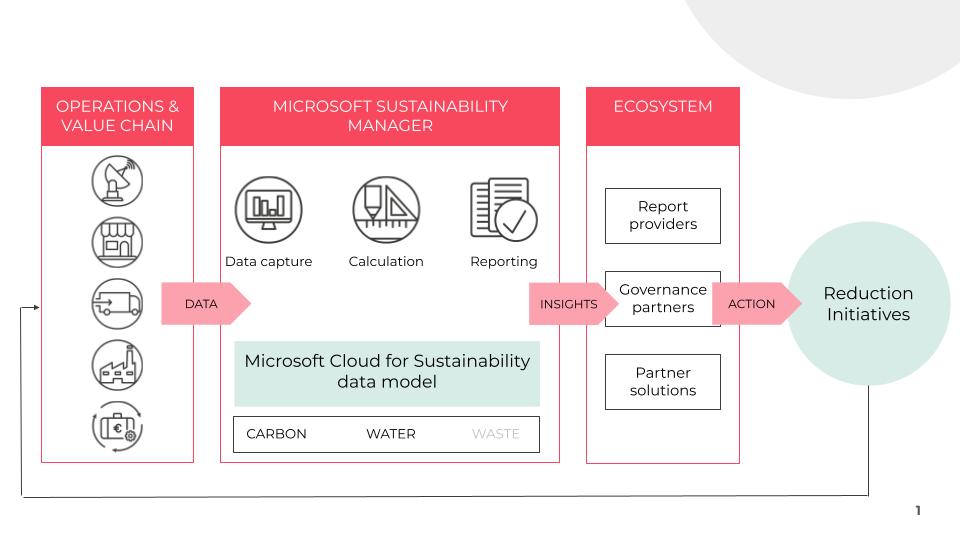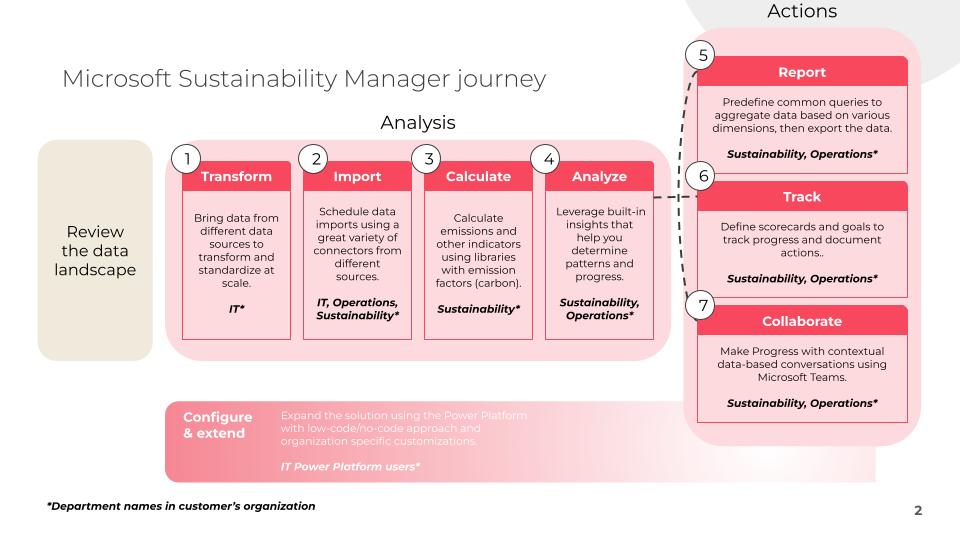Have you heard about Microsoft Sustainability Manager? It is an extensible solution that unifies data intelligence and provides comprehensive, integrated, and automated sustainability management for organizations.

It automates manual processes, enabling organizations to more efficiently record and report. The Sustainability Manager actively contributes to minimizing environmental impacts and emissions, improving operational efficiency, and nurturing sustainable value chains.
This tool proves invaluable in ensuring compliance with ESG regulations. It facilitates the establishment of key performance indicators and targets for progress tracking, with the added flexibility to expand functionalities using Microsoft tools such as Azure, Power Platform, Fabric, and more.
Microsoft Sustainability Manager is an essential tool for improving corporate sustainability, regardless of their position in the environmental journey.

Greener IT through the complementary Emission Impact dashboard
The Emission Impact Dashboard acts as a valuable complement, enhancing the features of the Sustainability Manager solution. This carbon tracking application uses Power BI templates to understand, track, report, analyze, and reduce carbon emissions associated with cloud usage. The methodology is designed to measure emissions comprehensively across all three impact scopes (direct or indirect emissions) ensuring a global approach to carbon tracking.
How does Sustainability Manager address challenges in ESG compliance?
Amid the universal shift towards sustainability, companies face challenges in adapting to mandatory ESG reporting and environmental risk assessments. The complexity lies in reorganizing multiple IT systems and databases, hindering the efficient collection of measurable data for both informed decision-making and mandatory reporting.
Microsoft Sustainability Manager is a tool that could be adjusted to any environmental, social, and governance data flow. It also allows matching it with different reporting schemes according to new European reporting requirements (i.e CSRD), local law policies, and internal business procedures. More importantly, it has a clear and consistent methodology that can be easily checked and audited during the validation process by external auditors.



Moreover, this tool facilitates the real-time collection, analysis, and tracking of dispersed data. This integration capability effortlessly aligns with any enterprise system through automated or even tailored data connections. By centralizing previously disparate data into a standardized format, organizations gain a comprehensive overview of emissions impact across operations and value chains.

Sustainability Manager implementation journey
As organizations look to meet their sustainability goals by configuring and deploying Microsoft Sustainability Manager, it’s important to comprehend the data-centric journey. The following illustration describes the typical journey:

Common implementation patterns start with setting up organizational and reference data, essential for reporting, tracking, and collaboration. Data transformation and import leverage built-in tools like Excel templates and Power Query, with options to use Partner solution or tailored connectors for diverse data sources. Complex transformations may employ Extract, Transform, and Load (ETL) patterns. After the import, insights are presented through key indicators, guiding actions, progress monitoring, data export, and collaboration. Flexibility allows extension to meet specific needs by adding fields, tables, customizing models, or integrating flows.
This implementation journey can repeat for different specific categories and operations.
In conclusion
Microsoft Sustainability Manager is a pivotal tool for advancing corporate sustainability, offering a comprehensive and automated approach. It streamlines manual processes, reduces environmental impacts, and fosters compliance with ESG regulations. With adaptability to diverse data flows and reporting schemes, the tool provides a clear and consistent methodology. It facilitates real-time data collection, aligns with enterprise systems, and offers flexibility for customization, making it essential for organizations at any stage of their sustainability journey.